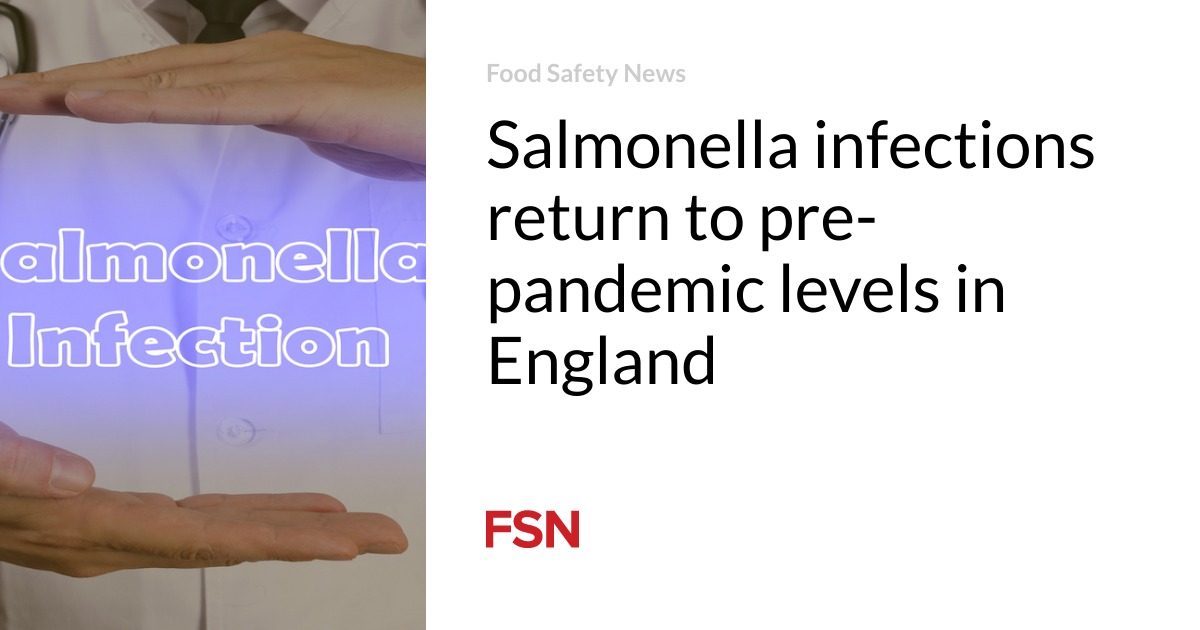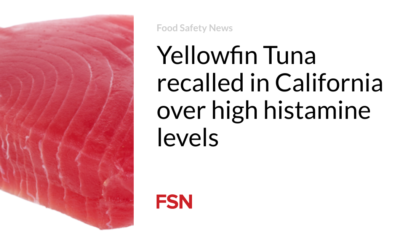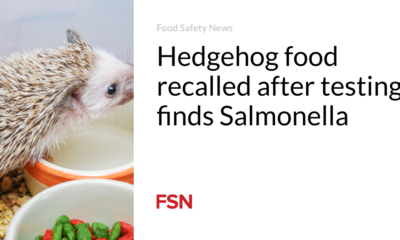Food
Salmonella infections are returning to pre-pandemic levels in England

Salmonella cases in England have returned to pre-COVID-19 pandemic levels and 11 outbreaks have been reported in 2022.
Salmonella Enteritidis was again the most reported serovar and Salmonella Typhimurium infections also increased, the UK Health Security Agency (UKHSA) said.
In 2022, there were 8,125 cases of salmonella in England, compared to 5,033 in 2021, 4,712 in 2020 and 8,398 in 2019.
The number of Salmonella Enteritidis reports increased from 747 in 2021 to 2,044 in 2022. Salmonella Typhimurium infections increased from 1,219 in 2021 to 1,731 in 2022. Salmonella Infantis was in third place with 310 reports, followed by Salmonella Newport, Mbandaka, Agona and Virchow.
The data comes from the Second Generation Surveillance System (SGSS) and the eFOSS (electronic food and non-foodborne outbreak surveillance system) of the Division of Gastrointestinal Infections and Food Safety (One Health) (GIFSOH).
The age group with the most laboratory reports were children under 10 years of age. This category was responsible for 26 percent of laboratory reports. The patients were divided equally between men and women.
London had the highest number of Salmonella laboratory reports with 1,631 and was the region with the highest number with 18.4 reports per 100,000 inhabitants. The North East had the lowest number of Salmonella reports at 408, but the East Midlands had the lowest reporting rate: 11.5 per 100,000 residents.
In 2022, more than 66,700 cases of salmonella were recorded in 30 countries in Europe and the European Economic Area (EEA), with 81 deaths. France, Germany and Spain reported more cases than England.
Details of the outbreak
In 2022, eleven outbreaks were recorded in England involving 591 patients, four of which were caused by Salmonella Typhimurium.
The largest affected 133 people in England, 26 of whom were in hospital. This was caused by contaminated Ferrero Kinder chocolate. Another outbreak with 91 cases was linked to meat products. A ready-made meal contaminated with Salmonella Typhimurium made 24 people ill, with two deaths. Five people became ill after drinking raw milk on a farm.
Two Salmonella Infantis outbreaks were linked to chicken. The first affected 50 people and the second had 58 cases.
One person died and ten were hospitalized during an outbreak of Salmonella Mbandaka, with 112 cases caused by chickens.
An outbreak of Salmonella Gueuletapee in 47 patients was linked to kebab meat and an outbreak of Salmonella Agona in 16 patients was caused by cucumbers.
Fresh coriander served in a restaurant sickened 33 people, four of whom were hospitalized due to Salmonella Java. The source of a new Salmonella outbreak involving 22 people was not found.
Some of these outbreaks also involved other countries. The Salmonella Typhimurium chocolate outbreak included 455 laboratory-confirmed cases in 17 countries.
By March 2024, the Salmonella Mbandaka outbreak had sickened at least 300 people in seven countries, including 173 in Britain. The outbreak strain was found in frozen chicken breast fillets produced in Ukraine.
The Salmonella Agona incident affected more than 100 people in three European countries. Cucumbers from Spain were the suspected source.
Britain was also involved in an outbreak of Salmonella Virchow, caused by chicken kebab meat, and an outbreak of Salmonella Senftenberg, linked to cherry tomatoes.
(To sign up for a free subscription to Food Safety News, click here.)













